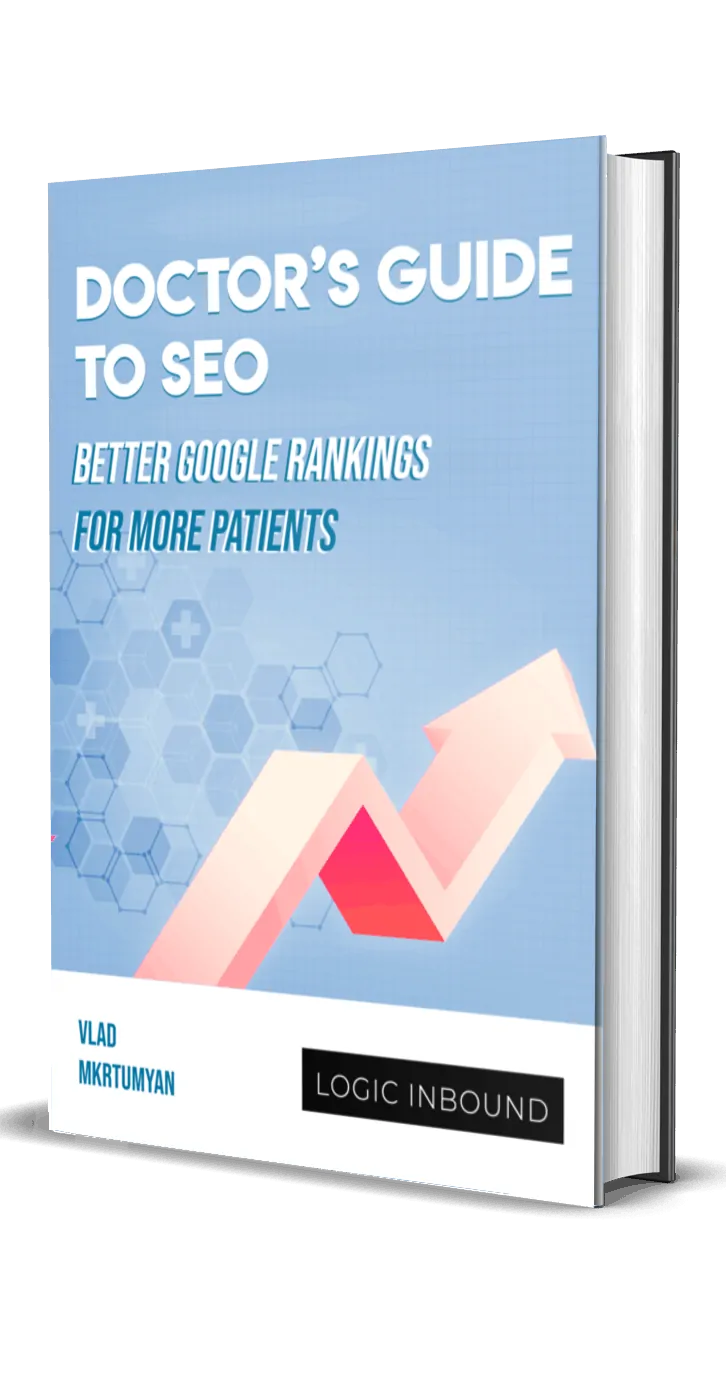Marketing is an ever changing industry, no matter what it’s meant for. And healthcare marketing is no different, even if many practice owners choose to ignore this.
Word of mouth still works very well for most medical practice owners, since healthcare is based on trust and social proof. But word of mouth doesn’t happen by accident, it takes conscious effort as well.
In this post we’ll be taking a look at modern healthcare marketing strategy, with some inclusions of traditional marketing methods as well. Our focus is going to be online marketing and search engines. That’s where medical practices can really scale.
Healthcare practice owners who want to get more new patients should include a variety of tactics in their strategy so their brand stays competitive. We never dismiss word of mouth, as it works well for many practice owners. But for practice owners who want to expand and grow outside their local area, online marketing strategy is essential.
Online Healthcare Marketing
Online healthcare marketing is best suited to new doctors who’re looking for patients, or established practice owners who want to expand beyond their local community.
Expansion isn’t as hard as it used to be. You don’t need to establish your reputation through word of mouth. Online search and marketing work wonders. People in the modern world expect quick resolution to their problems, and the same is true for healthcare concerns.
89% of consumers refer to an online search engine when they’re looking to solve their healthcare queries.
Define Your Target Patient / Audience
Defining your niche, ideal patient and target audience will be the key first steps to developing a successful marketing strategy later on. You should know what kinds of people can come to you for their health issues.
A lot of inexperienced doctors struggle to define their niche, or ignore it completely.
Dr. Andrea Cole from San Diego thinks it’s important for every doctor to do this.
“In order to be independent, doctors need to identify who they are and who their patient is. Who are they trying to attract? What does their practice bring to the table that’s different?”
Understand Your Target Patient / Audience
As a doctor, it’s essential to understand what your target audience goes through in order for them to feel a need for you.
Google calls these moments of needs from consumers ‘micro moments’. A micro moment occurs when a consumer seeks help from a device, usually a smartphone or a laptop, in order to learn, watch, discover or do something immediately.
Modern-day consumers want solutions or at least some answers, “right here, right now”. And medical practices that learn their audience’s micro moments, and have the content to be front and center during each of these have a greater chance of acquiring them as new patients.
For the healthcare industry, there would be micro moments such as:
What Am I Experiencing This?
Even a cough can cause some people to immediately turn to their smartphone to learn if something is wrong with them. This is the very beginning of the research phase, or top of the funnel in marketing terms.
Consumers aren’t looking to make a buying decision, but rather educate themselves. If your content pops up at this stage, you’ve gotten their attention indirectly.
What Are My Options?
After some initial research, patients will start to search for treatment options near them. They’ll usually search for “X treatment near me” or “X doctor near me” to look at their options.
Ranking high for these terms will mean you’re one of the first options these people will consider.
Who Can I Trust?
At this stage, the patient has a few options in front of them and are now looking for credentials and social proof to validate the best ones. Online reputation (reviews etcetra), credentials on your website, testimonials, case studies and any other trust-building material will help your case here.
Let’s Book an Appointment
Once a prospective patient has chosen your practice, they’ll want to book an appointment. Your website should be user friendly enough that a patient should have no trouble booking an online appointment.
Understanding these micro moments will help you build an effective marketing strategy that’s based on knowledge rather on gut feeling.
Design A Website For Patients
“Your website is not for you, it’s for your patients”, says Simon Nowak, CEO of Dental Authority, a verified dental information website.
If you think you don’t need a website, think again. In the wake of a seasonal disease, you could alert your patients via website to take the necessary precautions. This would help build trust and show that you’re up to speed on what’s happening.
Current and prospective patients will judge your practice a lot from the way your website looks and functions. Users can form an opinion of your website within 0.05 seconds, and 48% of people consider a website’s design to be the number one factor in deciding the credibility of a business.
So if you think you can get away with DIY-ing your website on a rudimentary website builder, think again.
What is the kind of website your patients want? Some functionality that your patients could demand:
- Online scheduling
- Bill payment
- Patient portal with easy access to their medical records and health data
- E-prescriptions
- Communication with the doctor
- Content that’s helpful for their health (videos preferably)
- Telehealth option if possible
And these are just the features and functionality today’s patients demand. Even if you have all of these features but they prove to be too cumbersome to use, your patients will actually come away with negative feelings about your practice.
Here are some general guidelines on good website design:
Speed
Your website should be hosted on fast, reliable servers, and it needs to load under 3 seconds. Studies have shown a sharp drop-off in visitors if a site takes longer than 3 seconds to load.
Secure
Healthcare is an immensely privacy-centric industry. If your website isn’t secured by HTTPS, it could lead to lower trust among visitors and prospective patients. Google is also planning to penalize websites that don’t have HTTPS.
But for healthcare websites, security goes beyond HTTPS. You’ll need to make sure you’re storing patient data in a HIPAA-compliant manner, with additional measures on top of that.
Mobile Optimized
Substantial portion of your website’s traffic will come from mobile devices, and having a website that isn’t optimized to render on these devices will frustrate users.
Get Found by Patients Through SEO
SEO (search engine optimization) is a set of tools and techniques with the goal of ranking your web pages higher up in the search results.
Prospective patients will search for healthcare information and services using terms such as “naturopath near me” or “natural doctor in Seattle”. It’s up to you or your marketing agency to figure out what prospective patients are searching for.
You need to rank high if you want to have a successful practice, unless you’ve been in the industry for decades and have a steady stream of referral patients coming in.
Social Media
Social media isn’t just for the likes of Coca Cola and McDonalds. An increasing number of healthcare professionals are leveraging social media sites like Facebook and Instagram to reach a broader audience outside of their community.
According to Renee Greenberg (www.womenshormonehealth.com), a functional medicine practitioner, putting yourself out there (via social media) shows your value.
She also advises on posting videos on Instagram and Facebook (more on that later).
Healthcare providers can use social media to interact with followers and improve awareness about their services.
Instagram is a social media platform which is based on pictures, and that makes it a perfect fit for healthcare providers in nutrition an dfitness.
Dr. Sara Love, a naturopathic doctor at Doubletrack Naturopathic says, “My clinical focus is on nutrition and fitness. Visual platforms are great for that. You can share before and after pictures, for example and people are always interested in those”.
Social media can also be a great source of traffic to your website. Share your content across your social media pages and if you have a good following, you’ll see steady growth in traffic.
On top of this, social media also provides another way for your patients to reach out to you.
Dr. Renee is also using Facebook in a creative manner. Her audience is women over 40 who’re going through hormonal issues. Sensing the importance of privacy for this demographic, she went ahead and created her own private Facebook group.
And now the group she started 5 years ago has become a place for women to interact with each other, as well as providing Dr. Renee with a culture connection to her audience. She says keeping the group interactive and its members engaged is a great strategy.
Video Marketing
The explosive popularity of YouTube means that everyone is used to watching videos to get their fix of entertainment, information, education and anything really.
Healthcare providers can also use videos to market their services more effectively. Visual content is more appealing and easier to digest.
According to Dr. Renee, “Videos can help people to get to know you quickly. And you can get a following by publishing videos that attract the people you want”.
“Just publish a quick 10-minute video, something they (your audience) can practically use”.
Some video ideas for healthcare providers:
Physician Intros
What better way to showcase your physicians than to introduce them through video? Let’s face it, a video will feel more personal than text content. This can help build trust quicker.
Patient Testimonials
Create videos of patient testimonials to show success stories for your treatments. This is part of social proof, and it can make prospective patients come to a buying decision quicker.
FAQ Videos
Are there some questions you hear every so often from your patients? Why not create a video to not only educate new patients, but reach out to prospective patients and educate them as well.
Feel free to upload these videos to YouTube as it’s the biggest video-based social network in the world. You’ll reach a completely new audience through YouTube.
Measure Your Success Through Data
All your marketing efforts will be for naught if you’re not getting any practical benefits from them. You have to figure out measurable outcomes that indicate whether a particular strategy is working or not.
This could be the number of patient appointments, new patients, traffic to your website, phone calls and so on.
If you’re getting thousands of people to your website each month but not getting any patient appointments, then the traffic is effectively meaningless.


 “In order to be independent, doctors need to identify who they are and who their patient is. Who are they trying to attract? What does their practice bring to the table that’s different?”
“In order to be independent, doctors need to identify who they are and who their patient is. Who are they trying to attract? What does their practice bring to the table that’s different?”
 “Your website is not for you, it’s for your patients”, says Simon Nowak, CEO of
“Your website is not for you, it’s for your patients”, says Simon Nowak, CEO of  According to Renee Greenberg (
According to Renee Greenberg (